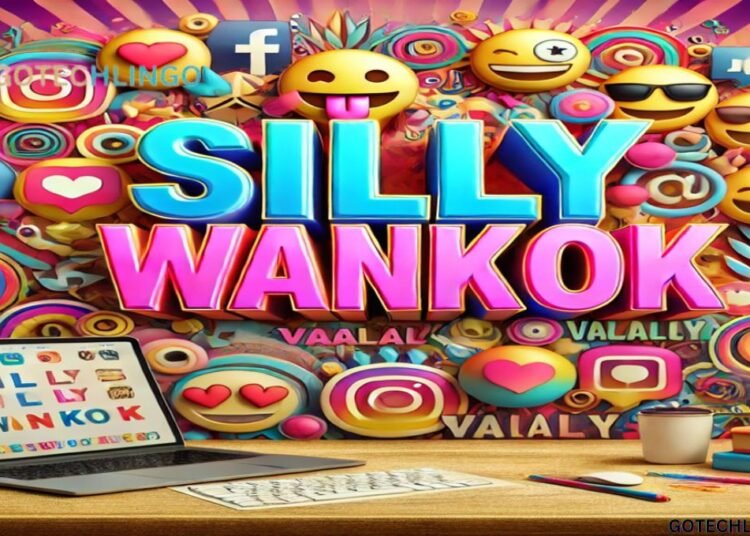What is Silly Wankok?
The term ‘silly wankok‘ may initially seem perplexing, yet it embodies a rich tapestry of humor and playfulness that resonates in various cultural contexts. Originating from a blend of whimsical vernacular, ‘silly wankok’ serves as a descriptor for absurd or nonsensical behavior, often eliciting laughter and amusement. The etymology of the phrase merges elements from different languages and dialects, showcasing the natural amalgamation of humor across cultures.
Historically, the concept of silliness has been celebrated in various societies. Ancient jesters, for instance, utilized absurdity and wit to reflect societal norms, akin to today’s interpretation of silly wankok. This term can be likened to the playful antics of clowns or the humorous scribbles of doodlers, igniting a sense of creative freedom. In modern contexts, it also informs discussions surrounding creativity, suggesting that engaging with the whimsical can lead to innovative thinking.
Anecdotal evidence supporting the significance of silly wankok can be observed in social media platforms and internet culture, where memes and humorous content often embrace absurdity. The playful nature inherent in silly wankok encourages individuals to step outside the boundaries of conventional thought, allowing for unrestrained imagination. For example, videos circulating on various platforms may showcase individuals partaking in silly challenges or engaging in humorous, nonsensical dialogues that epitomize the spirit of silly wankok.
This spirit not only provides levity in daily life but also fosters community interaction as individuals come together to share in the laughter. Therefore, understanding silly wankok is crucial for appreciating the nuances of humor in contemporary discourse, highlighting its importance in promoting creativity and social connection.
The Humor Behind Silly Wankok
The appeal of silly wankok largely stems from its unique brand of humor that evokes laughter through absurdity and lightheartedness. This type of humor resonates with audiences by offering a temporary escape from the stresses of everyday life, allowing individuals to engage with the more whimsical aspects of existence. The absurdity often found in silly wankok challenges conventional logic, pushing the boundaries of what is considered funny and inviting viewers to embrace the nonsensical.
From a psychological perspective, humor serves as a coping mechanism. Silly wankok plays on the notion of incongruity; the unexpected twists and turns in comedic narratives create a delightful surprise that elicits laughter. This element of surprise is especially evident in comedic styles such as slapstick, which often employs physical humor that is exaggerated and whimsical. Classic examples can be seen in works by Charlie Chaplin or the antics of The Three Stooges, where the humor primarily arises from ridiculous situations and exaggerated physical movements.
Parody also plays a significant role in the realm of silly wankok. By imitating and exaggerating existing works or genres, parodic elements highlight the absurdity of their subjects. A notable example can be found in various animated series, such as “The Simpsons,” which often utilize silly wankok humor to comment on contemporary society. This indirect critique can provoke laughter while simultaneously prompting reflection on the norms of culture.
Additionally, the style of surrealism further enhances the whimsical nature of silly wankok, inviting audiences to explore a fantastical world where the rules of reality do not apply. The works of filmmakers like Salvador Dalí or contemporary creators like Tim Burton showcase scenarios that defy logic, often resulting in a comedic experience that is both enjoyable and thought-provoking. Overall, the interplay of absurdity and humor in silly wankok fosters a space where laughter reigns supreme, encouraging audiences to relish in the joy of the ridiculous.

Creating Your Own Silly Wankok Moments
Infusing your life with elements of silly wankok can spark creativity and rejuvenate your daily routine. One of the simplest ways to embrace this whimsical approach is by engaging in playful activities. Consider setting aside time each week for a “silly session,” where you immerse yourself in ridiculous games or comical dance-offs. Whether it’s a solo endeavor or a gathering with friends, the emphasis should be on embracing laughter and letting go of inhibitions.
For those who enjoy writing, brainstorming silly wankok-themed prompts can be particularly rewarding. Create stories featuring quirky characters caught in absurd situations, or compose a poem that celebrates the oddities of everyday life. This not only serves as a creative outlet but also allows your thought processes to expand beyond conventional boundaries, encouraging spontaneity and fun. Sharing your creations through social platforms can also attract like-minded individuals who appreciate the joys of whimsical storytelling.
Many artists and comedians have successfully integrated elements of silly wankok into their routines, providing inspiration for aspiring creators. Reflecting on their work can spark new ideas and serve as a reminder that this lighthearted approach does not require formal training. Consider following influencers who promote a playful lifestyle; their creative exercises and challenges can inspire you to adopt similar practices in your own life.
Another engaging way to foster a silly wankok spirit is to collaborate with friends on creative projects. Whether it’s crafting a hilarious video skit, painting a comically exaggerated mural, or conducting an improv comedy night, the shared experience enhances the joy associated with silliness. Ultimately, the goal is to welcome playfulness into your life, reminding you that embracing the absurdity within us and around us can lead to unexpected joy and connection.
The Impact of Silly Wankok on Society
The phenomenon of silly wankok has noticeably influenced various facets of society, particularly in the realms of mental health, community engagement, and the arts. Humor and silliness, often encapsulated by the term “silly wankok,” serve as effective tools for coping with stress and navigating the complexities of modern life. In an increasingly fast-paced world, the pressures of daily life can lead to heightened levels of anxiety and depression. Engaging in light-hearted activities, laughter, and the playful spirit of silliness can act as a buffer against these stressors, providing individuals with necessary relief and fostering better emotional resilience.
Beyond individual health, silly wankok has significant implications for community bonding. Participating in silly activities promotes interaction and collaboration among diverse groups, breaking down barriers and establishing a sense of connection. Initiatives that celebrate humor—be it through festivals, performance art, or community gatherings—encourage inclusivity and allow members of the community to embrace their shared human experience. Such participation often fosters an environment where creativity flourishes, leading to innovative expressions in the arts that resonate with the broader society.
Moreover, the impact of silly wankok can be seen in the evolution of social commentary. Artists and comedians harness the spirit of silliness to address serious issues in an accessible manner. By presenting topics through a humorous lens, they can facilitate discussions that might otherwise seem daunting. These creative expressions not only entertain but also evoke critical reflection, making the difficult easier to digest and engage with. Through laughter and silliness, audiences are encouraged to reassess their perspectives on societal norms and challenges.
In conclusion, the influence of silly wankok on societal dynamics is both profound and multifaceted, encompassing health benefits, community building, and artistic innovation. By celebrating the ludicrous and humorous, society can create environments that prioritize well-being and foster a stronger sense of belonging among individuals.

















